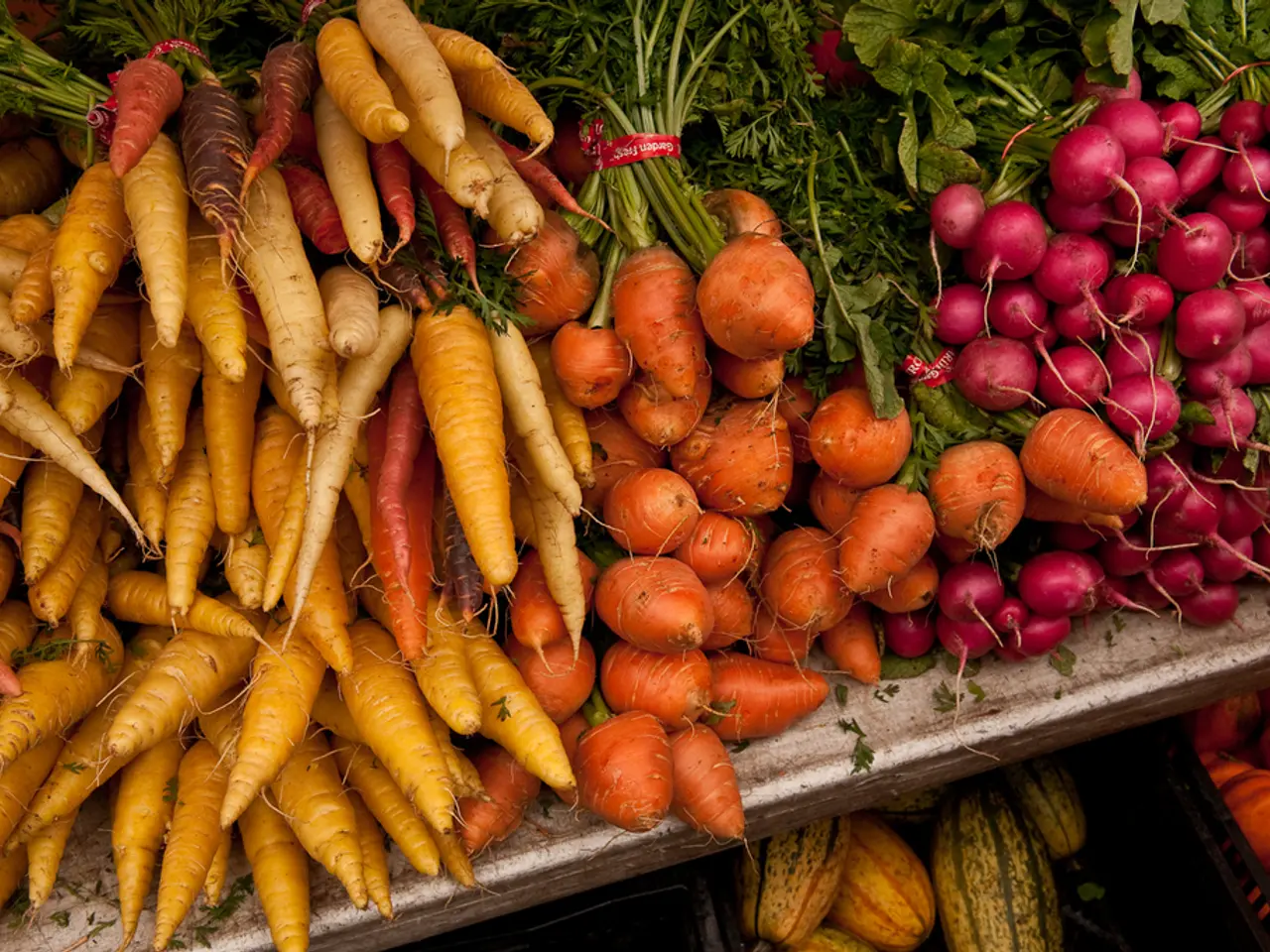Farming technique involving the sequential growth of different types of crops on the same plot of land to combat soil depletion and pest problems.
A four-year crop rotation plan is an effective and sustainable method for maintaining a thriving vegetable patch or allotment. This system, which involves dividing crops into four distinct groups based on their family and nutrient needs, offers numerous benefits such as maintaining soil fertility, disrupting pest and disease cycles, and balancing nutrient use efficiently.
Organizing a Four-Year Rotation Plan
Typically, crops are grouped into categories such as:
- Legumes (e.g., peas, beans) – These plants fix atmospheric nitrogen, enriching the soil naturally.
- Leafy greens and brassicas (e.g., cabbages, lettuce) – Often nutrient-demanding and heavy feeders.
- Root crops (e.g., carrots, onions, beets) – These take nutrients from different soil layers.
- Fruiting vegetables (e.g., tomatoes, peppers, cucumbers) – These generally require different nutrients and conditions.
Each year, you plant a different group in each plot following the sequence, for example:
| Year 1 | Year 2 | Year 3 | Year 4 | |--------|--------|--------|--------| | Group A (Legumes) | Group D (Fruiting) | Group C (Root) | Group B (Leafy/Brassicas) |
Then rotate each group to the next plot the following year, so no crop family returns to the same soil for four years.
Advantages of a Four-Year Rotation
- Enhanced Soil Fertility: Legumes fix nitrogen, replenishing the soil naturally for following crops that need more nitrogen. Alternating heavy feeders with lighter feeders or nitrogen fixers helps maintain balanced soil nutrients.
- Pest and Disease Control: Many pests and diseases are crop-family specific. Rotating crops interrupts their life cycles, reducing infestations and soil-borne diseases associated with continuous planting of the same crop family.
- Weed Control: Different crops and associated cultivation practices can suppress weeds by disrupting their growth patterns.
- Improved Soil Structure and Water Efficiency: Crop diversity with different rooting depths enhances soil structure, reduces compaction, and improves water infiltration and retention.
- Higher Yields Over Time: Healthier soil and lower pest pressure translate into better overall productivity.
Implementing a Four-Year Rotation
- Plan Ahead: Use a garden map to track crop families and locations annually to maintain rotation order.
- Incorporate Cover Crops: Between main crops, use cover crops (like clover) to add organic matter and nutrients.
- Soil Amendment: Complement rotation with organic compost or fertilizers especially for heavy feeders.
- Observe and Adjust: Monitor your garden for pest, disease, or nutrient issues and adapt the rotation plan accordingly.
This approach, widely practiced historically and still recommended for sustainable vegetable gardening, provides a structured and beneficial way to manage a small vegetable patch or allotment effectively. A video guide on crop rotation, titled "No Fuss Guide to Crop Rotation," is available, demonstrating the best order for a four-year cycle. The video features David Hurrion, who provides instruction on crop rotation, and is likely to simplify the process for viewers.
There are no disadvantages to crop rotation apart from some advance planning and keeping notes to remember which crops have been grown where. Embracing a four-year crop rotation plan is an investment in a healthier, more productive, and sustainable vegetable patch.
- Adopting organic gardening practices, such as crop rotation, can contribute to a healthier lifestyle by providing fresher, home-grown produce for home-and-garden enthusiasts.
- For those who enjoy gardening, implementing a four-year crop rotation plan not only maintains soil fertility and disrupts pest cycles but also improves the garden's overall structure and water efficiency.
- To further enhance the benefits of a four-year crop rotation, gardening enthusiasts can incorporate techniques like soil amendment with organic compost and the use of cover crops to add organic matter and nutrients.





